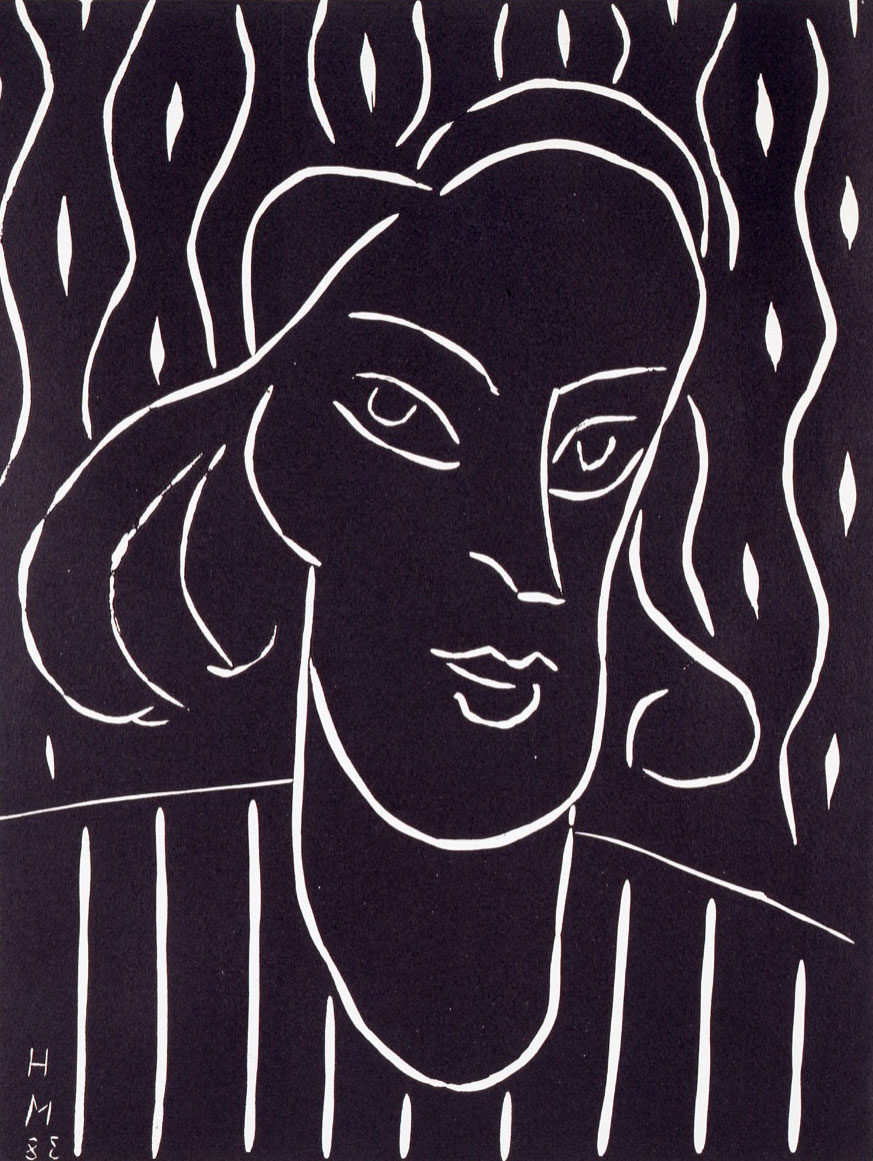

In the late 1960s, Emory’s Art History Department began acquiring two-dimensional works of art on paper to be used for teaching and study. In 1969, Ray and Georgie Braun offered the department a linocut by Henri Matisse called “tete de femme.” The work was one of a series of prints created by Matisse in 1938 that depicted his then-daughter-in-law Alexina “Teeny” Duchamp.
The Art History Department moved into Annex B in the fall of 1970 and set up a study gallery for their burgeoning collection. On June 1, 1971, a report was made to Emory Safety and Security that Teeny had been stolen from Annex B. A few days later William Crelly, then chair of the Art History Department, contacted Safety and Security again – urging them to “be as energetic in attempting to recover this important and valuable object of art as you have been in the matter of minor traffic citations and car towing during the past year”. Art history professor Karl Nickel complained to Emory administration about both the lack of security afforded to the department’s collection and the inadequacies of the current facilities.
The back and forth between the Art History Department and Emory administration continued for almost two months. Just as there was talk of filing an insurance claim for $300 (less than half what the work was reportedly worth), a package arrived via inter-office mail for Professor Crelly at Annex B on July 27, 1971. Lo and behold the package contained the stolen Matisse! Teeny was exhibited by the Art History Department in 1974, before she and the rest of the department’s collection was transferred to the Emory University Museum of Art and Archaeology in the early 1980s.
Fast forward to November 2011. The Carlos Museum was planning an exhibition with the Art History Department called Embodied Seeing: Modernist Works on Paper 1890-1962. Teeny had been selected as one of the show’s signature images, and the museum’s registrar tried to secure copyright permissions to use Teeny for promotional purposes. The Matisse Estate was not able to grant permission for Teeny to be used to promote the exhibition because the signature and number on the print are forged. The best guess is that our Teeny is a 1959 reproduction of the unsigned 1938 edition of the print with the forged number and signature added at a later date.
Is the Teeny that was returned to the Art History Department in 1971 the same print that was donated by the Brauns in 1969? Or was an original signed 1938 linocut stolen from Annex B and replaced with a reproduction with the forged number and signature? We may never know….




